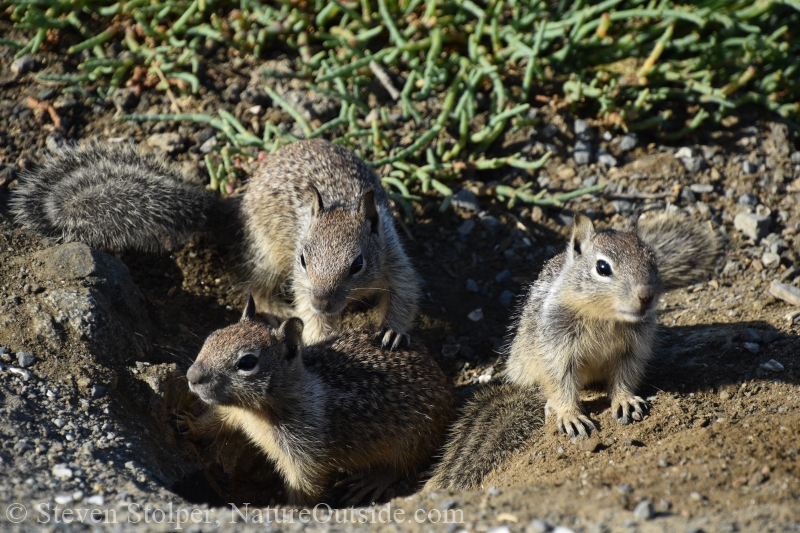
If you invest enough time in nature, you see some miraculous things. You catch surprise glimpses into an extraordinary secret world.
Whenever nature shows me something amazing, it’s because I put myself in a position to witness it. Instead of sleeping late, snuggled under warm blankets, I’m strolling through the mist as the morning sun filters through the forest canopy.
Trackers refer to outdoor experience as “dirt time.” And whenever I hear an “old timer” talk about an amazing experience he had, I know it’s the result of years spent roaming the forest. You can learn much from books. But it’s dirt time that blesses us with amazing experiences we never forget.
Morning Stroll
It’s early June and I’m strolling along the shore of San Francisco Bay. I’m in a wildlife refuge that has a freshwater lake, brackish marshland, and the San Francisco Bay. It’s home to all sorts of birds, mammals, and reptiles.
You wouldn’t think there’s much nature in a metropolitan area of nearly 8 million people. But it’s there if you look for it. And on this particular morning, I see something in nature I never expected to witness… cannibalism!
Marsh Birds
I find a juvenile Forster’s Tern, still being fed by its parents. It sits on the bank screaming whenever its parent flies overhead. The adult zooms across the shallow waters of a freshwater lake looking for fish.
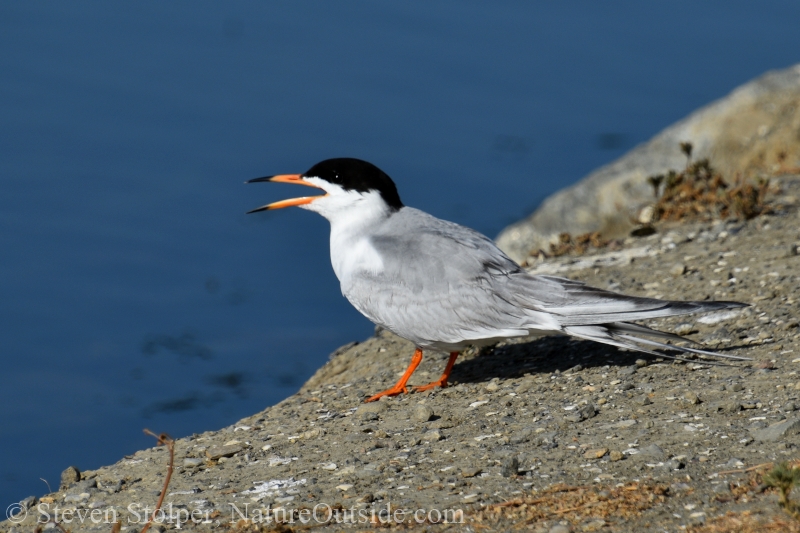
Foster’s Tern (Sterna forsteri). In the 1800s, Forster’s Terns were stuffed and mounted onto large hats that were fashionable during the Victorian and Edwardian eras.
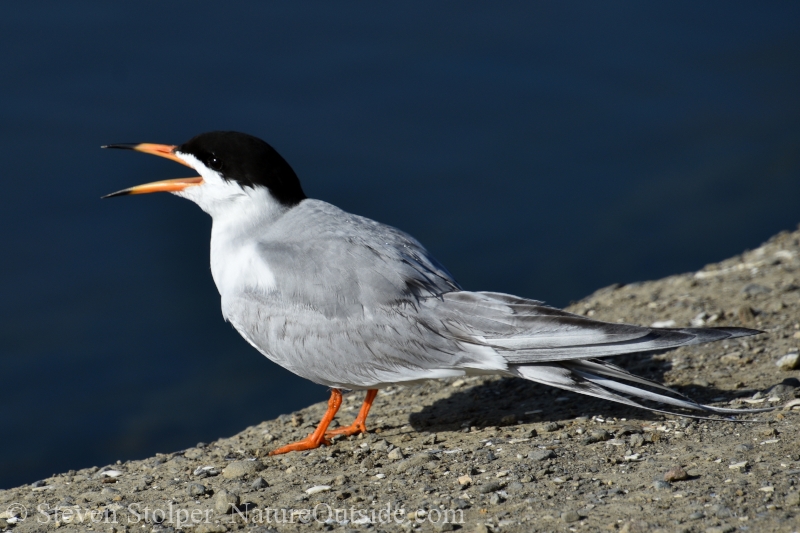
Foster’s Tern (Sterna forsteri). Forster’s Terns winter farther north than any other North American tern species.
The usual suspects are about. A Snowy Egret flies overhead, its bright yellow feet flashing in the morning light. The Snowy Egret is much smaller than its cousin, the Great Egret. And it’s distinguished by its brilliant yellow feet and black beak.
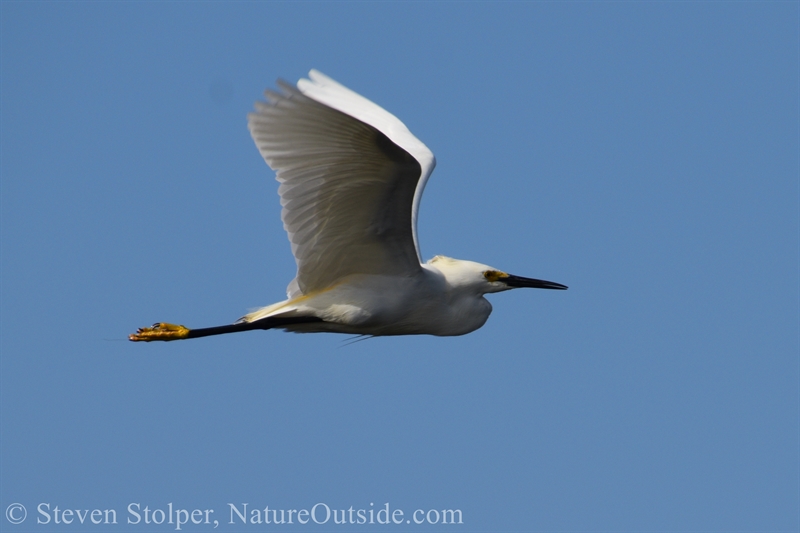
Snowy Egret (Egretta thula).
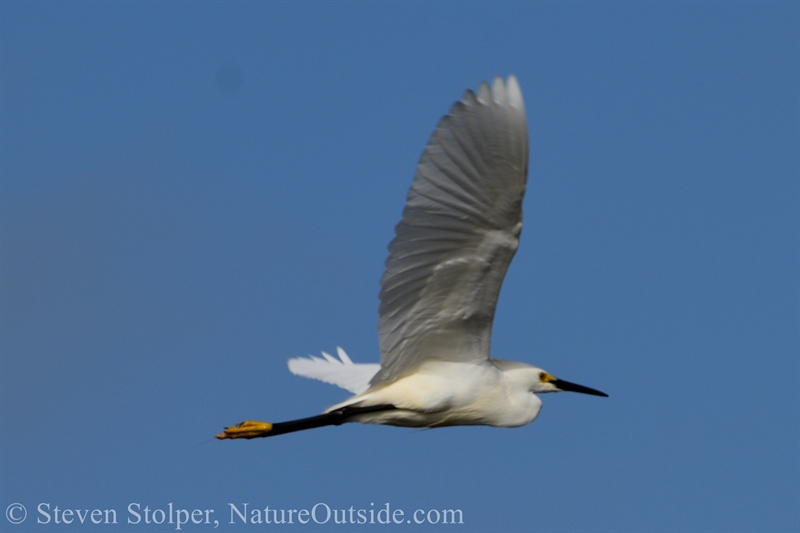
Snowy Egret (Egretta thula).
Coming off the night shift is a Black-crowned Night-Heron (Nycticorax nycticorax). They’re most active at night and at dusk. So when I see them they’re usually hiding… and looking like they’re sleeping off the world’s worst hangover!
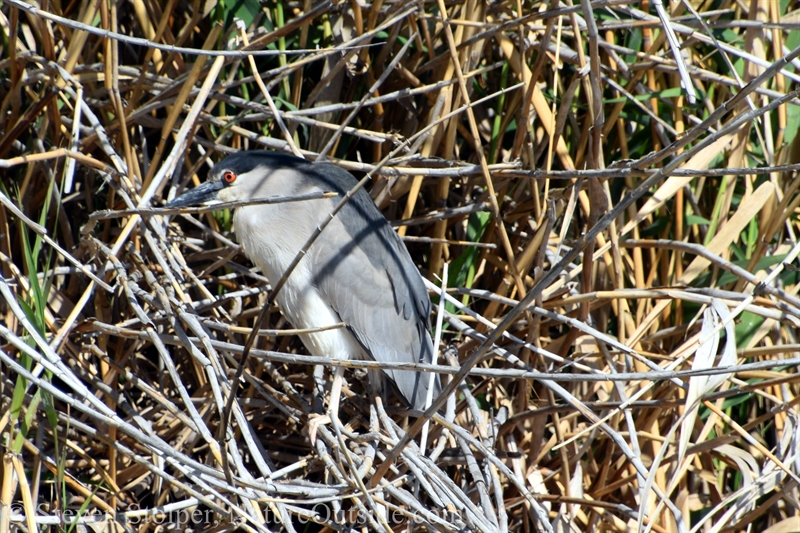
Black-crowned Night-Heron (Nycticorax nycticorax).
Mammals Galore
I creep stealthily along the trail. I’ve got the drop on a sleeping Black-tailed jackrabbit (Lepus californicus). Despite its name, its not really a rabbit. It’s a hare.
Hares are larger than rabbits and have longer ears and hind legs. And unlike rabbits they live alone or in pairs above ground. They use their amazing speed to escape predators. Rabbits tend to freeze and remain motionless to avoid the notice of predators.
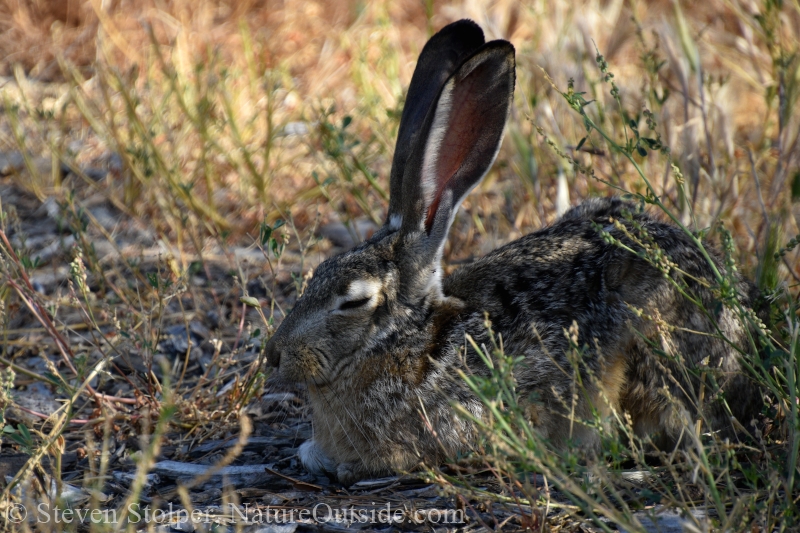
Sleeping Black-tailed jackrabbit (Lepus californicus).
This is how I usually see them.
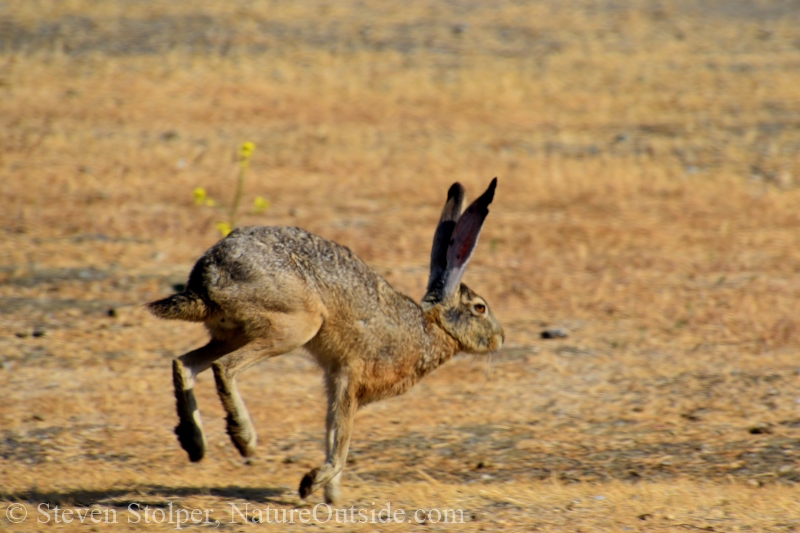
Black-tailed jackrabbit (Lepus californicus).
Animal Cannibal
As I hike, I’m surrounded by California ground squirrel (Otospermophilus beecheyi). They’re almost underfoot! I was reared on the East Coast of the United States. So it amazes me to see squirrels living underground instead of in trees.
They live in large communities that remind me of the tenements of my youth. As I approach, they dart into numerous holes they’ve excavated.
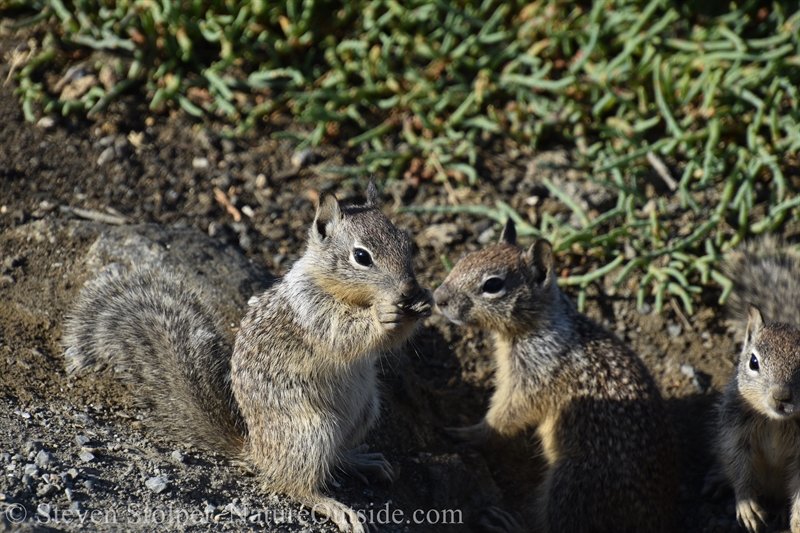
California ground squirrel (Otospermophilus beecheyi).

California ground squirrel (Otospermophilus beecheyi).
I traverse a grassland and find myself in an isolated spot. As I amble along I hear a soft scratch, scratch, scratch sound I can’t identify. It’s intermittent, and I halt several times to try to locate its source.
Ahead I can see the silhouette of a dead ground squirrel. That’s not an unusual site. The squirrels attract a variety of hawks and even Golden Eagles. But as I approach I see an amazing site.
There is a ground squirrel dining on the body of the deceased animal! It appears to be gnawing on the bones of the carcass. And that is the source of the scratching sounds.
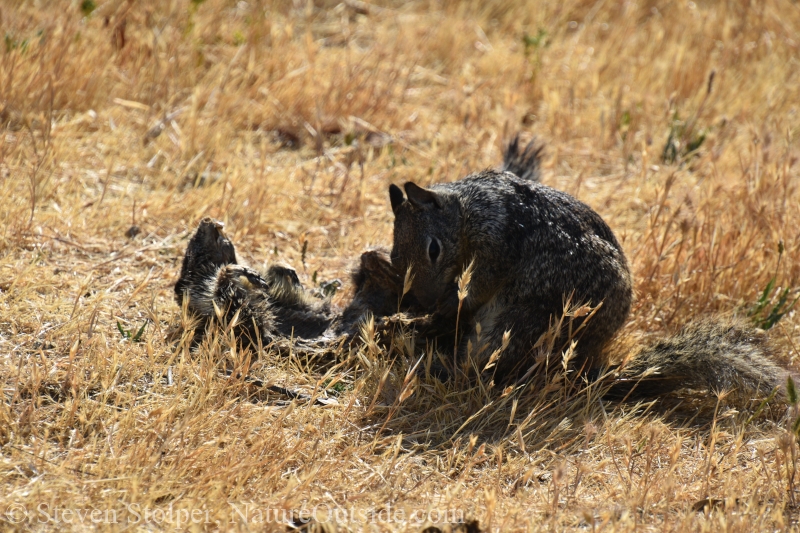
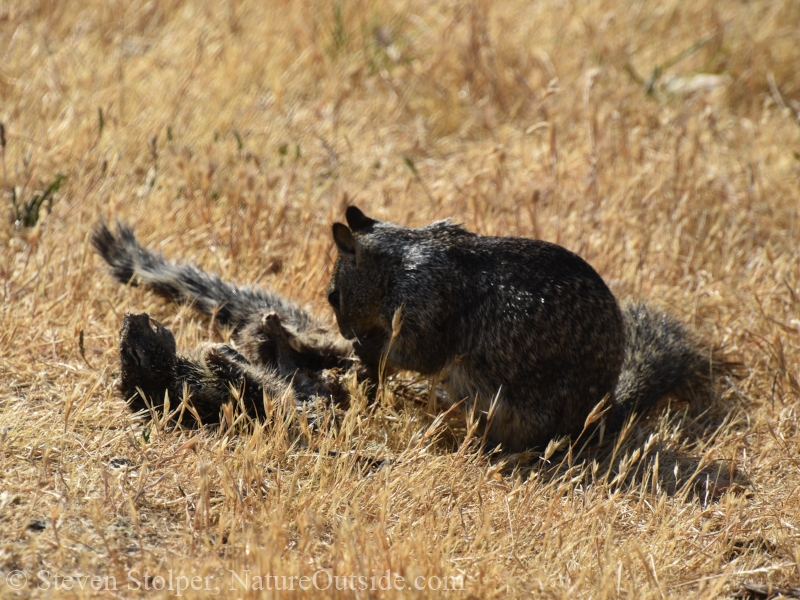
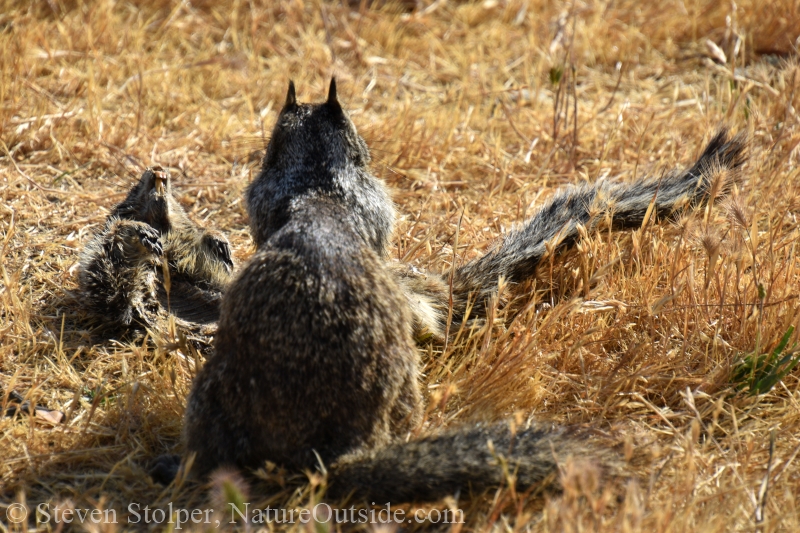
I never imagined that squirrels would engage in cannibalism. However, this case seems to be more about scavenging than murder. There are several reasons why the squirrel might do this.
Animals usually eat their own species to get extra nutrition. For rodents, this could satisfy their need for calcium, which can be hard to obtain with a plant-based diet. Seeds are generally high in nitrogen, potassium, and phosphorous. But low in sodium and calcium.
It is also June, and both calcium and phosphorous are needed during pregnancy and lactation. It’s possible that this is a female squirrel is gnawing the bones of the dead animal to increase her chances of reproductive success.
Gnawing bones also keeps rodent teeth worn down and sharp. So this could be hygiene.
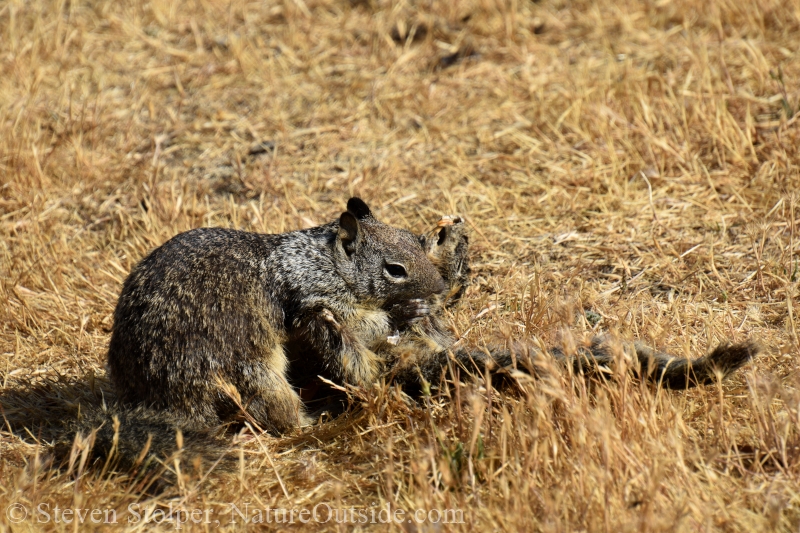
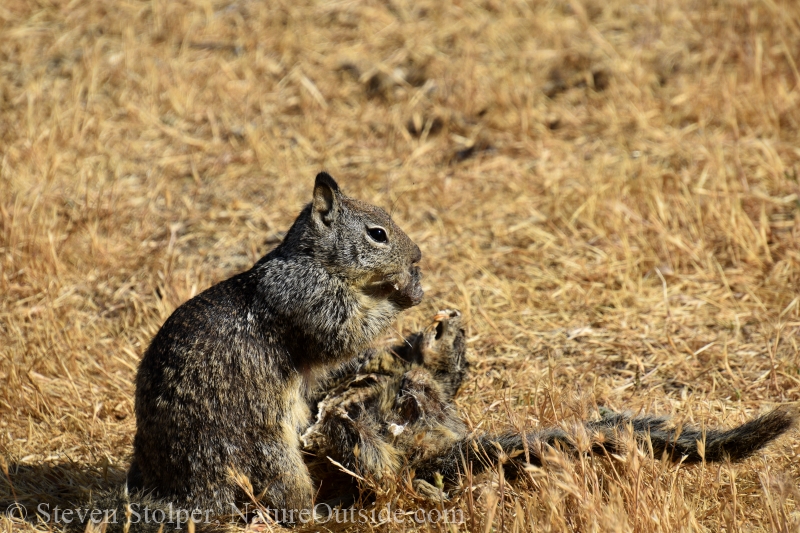
Experiences Small and Large
Seeing squirrel cannibalism does not rival a close encounter with a Grizzly bear. But I appreciate both experiences. And sometimes I learn more from modest chance encounters than I do from the dramatic ones.
Keep an eye out when you’re out hiking. And do so when you’re walking through your neighborhood. What unusual sites can you see?
Have you seen an unusual site in an unexpected place? Leave a comment below and tell me about it.
Related Articles on NatureOutside
Change Your Trail to Change Your Attitude
For fun facts and useful tips, join the free Bushcraft Newsletter.



My friend George witnessed not just California ground squirrel cannibalism this week, but an adult ground squirrel killing a young one. Found this article https://www.jstor.org/stable/4601178 and others about other species of squirrels, both ground squirrels and tree squirrels that commit infanticide. Among O. beecheyi it seems to be females that kill the offspring of other mothers. Well I enjoyed your article. I always learn something from your newsletter. Thanks for writing.
Barbara, thank you for your comments and the link to the informative article! We often look past animals that are relatively common. Ground squirrels show us yet again that when we examine common animals’ life-histories we often uncover fascinating hidden lives.